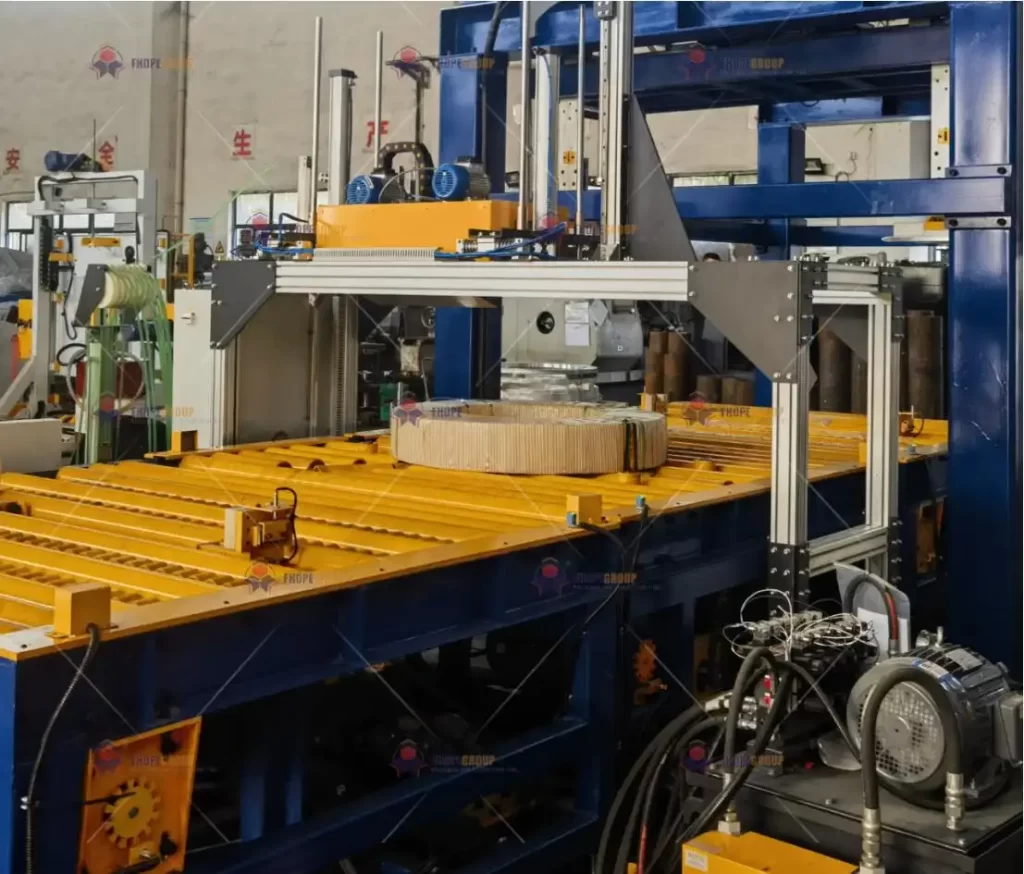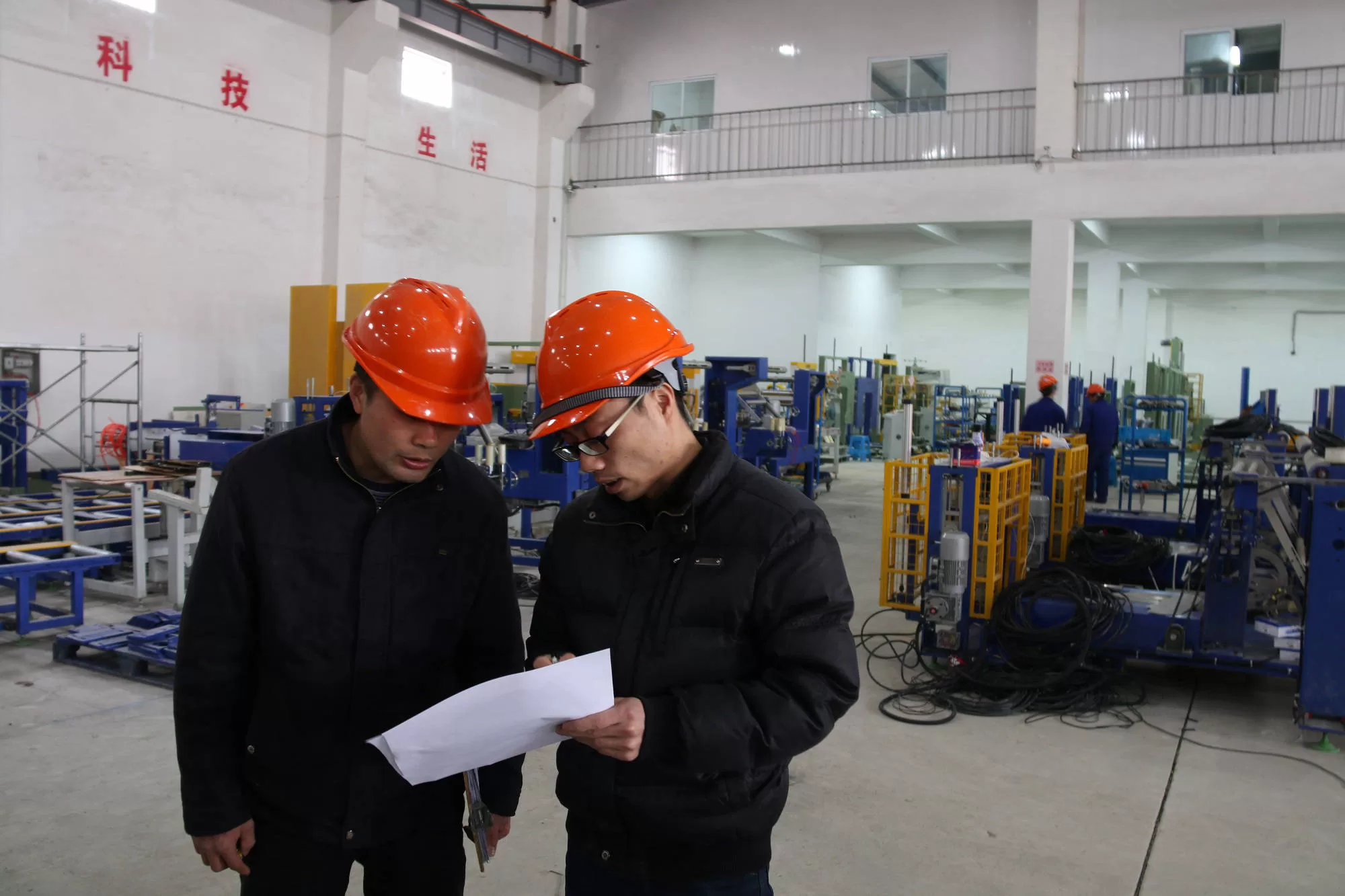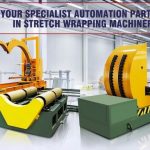How Steel Coil Packing Lines Are Transforming the Steel Industry Globally
- How Steel Coil Packing Lines Are Transforming the Steel Industry Globally
- 1. The Importance of Efficient Packaging in the Steel Industry
- 2. How Steel Coil Packing Lines Work
- 3. Key Benefits of Automated Steel Coil Packing Lines
- 4. Global Adoption of Steel Coil Packing Lines
- 5. Sustainability: A Growing Focus in Steel Coil Packaging
- 6. The Future of Steel Coil Packing Lines
- Conclusion: A Global Transformation in Steel Production

In the ever-evolving world of industrial production, the steel industry stands out for its constant demand for innovation, efficiency, and safety. Steel coil packing lines have emerged as one of the most significant technological advancements, revolutionizing how steel is packaged, transported, and handled. This transformation has reshaped global steel manufacturing operations, providing solutions that streamline production, reduce labor costs, and minimize damage during shipping.
In this article, we’ll explore how these automated systems are making an impact on the global steel industry, highlighting the key benefits, trends, and the future of steel coil packing lines. Whether you’re a business owner in the steel sector or simply interested in industrial automation, this deep dive will reveal how these machines are changing the landscape of steel production.
1. The Importance of Efficient Packaging in the Steel Industry
Packaging may seem like a secondary concern in industries focused on raw material production, but in the steel industry, efficient and reliable packaging plays a crucial role. Steel coils are large, heavy, and prone to damage if not handled correctly. Traditionally, packaging steel coils was a labor-intensive process involving manual wrapping, strapping, and loading. This created a host of problems, such as inconsistent packaging quality, increased labor costs, and higher risks of workplace injuries.
However, with the advent of automated steel coil packing lines, these issues are being addressed more effectively than ever before. By automating the entire process, steel manufacturers can achieve higher productivity levels, ensure consistent packaging quality, and significantly reduce the risk of damage during transport. This not only improves the bottom line but also enhances customer satisfaction, as properly packaged coils are less likely to suffer from scratches, dents, or other defects during shipping.
2. How Steel Coil Packing Lines Work
Steel coil packing lines are fully automated systems designed to handle the end-to-end packaging process. From wrapping the coils in protective materials to strapping them securely for transport, these machines ensure that every step of the process is handled with precision. Here’s a breakdown of the typical stages involved in a modern steel coil packing line:
- Coil Loading: The process begins with loading the steel coils onto the packing line. This is often done using forklifts or cranes, depending on the size and weight of the coils.
- Wrapping: The steel coil is then wrapped in a protective film, often made of stretch wrap or shrink wrap, to protect it from environmental factors such as moisture, dust, and corrosion.
- Strapping: After wrapping, the coil is strapped using steel or plastic straps. This ensures that the coil stays intact during handling and transport.
- Labeling and Weighing: Once the coil is securely wrapped and strapped, it is labeled with important information, such as weight, size, and shipping details. This is critical for traceability and efficient logistics.
- Palletizing or Direct Loading: Finally, the wrapped and strapped coil is either placed on a pallet or loaded directly onto a truck or container for shipment.
These automated systems are customizable to meet the specific needs of different steel manufacturers, ensuring that no matter the size or weight of the coil, the packaging process remains efficient and secure.
3. Key Benefits of Automated Steel Coil Packing Lines
The adoption of automated packing lines in the steel industry has brought about numerous benefits that are transforming global operations. Below are some of the most impactful advantages:
3.1 Increased Efficiency
Automation allows steel manufacturers to significantly speed up the packaging process. What once required a team of workers can now be completed in a fraction of the time with minimal human intervention. This not only increases throughput but also frees up workers to focus on other value-adding tasks.
3.2 Enhanced Safety
Handling heavy steel coils manually presents numerous safety risks, including potential injuries from lifting and moving heavy loads. Automated systems eliminate much of this manual labor, reducing the risk of accidents and creating a safer working environment for employees.
3.3 Improved Packaging Quality
With automation, packaging consistency is guaranteed. Each steel coil is wrapped, strapped, and labeled with the same level of care and precision, ensuring that all coils meet the same quality standards. This reduces the chances of damage during transport and enhances the product’s overall reliability.
3.4 Cost Savings
While the initial investment in an automated steel coil packing line can be significant, the long-term savings are undeniable. Reduced labor costs, fewer damaged goods, and faster throughput all contribute to a better return on investment (ROI). Moreover, minimizing product damage reduces the need for costly repairs or replacements, further driving down expenses.

Get Your Best Solution !
4. Global Adoption of Steel Coil Packing Lines
Steel coil packing lines have quickly gained popularity across the globe, particularly in regions with large steel production industries like China, Europe, and the United States. The steel industry is critical to infrastructure development and manufacturing, and as demand for steel grows worldwide, the need for more efficient packaging solutions has also increased.
In developing countries, the adoption of automated packaging lines is still in its early stages, but the trend is gaining momentum. These systems not only help companies remain competitive by reducing costs and increasing efficiency but also ensure compliance with international shipping standards, which are becoming more stringent as global trade expands.
Case Study: Europe’s Embrace of Steel Coil Automation
Europe, a major player in global steel production, has embraced automated packing technology to stay ahead in a competitive market. Companies in countries like Germany and the UK are increasingly adopting these systems to improve both operational efficiency and product quality. By automating their packaging processes, these companies have reported reductions in damage-related returns, enhanced logistics, and smoother international trade operations.
5. Sustainability: A Growing Focus in Steel Coil Packaging
As industries around the world focus on sustainability, the steel industry is no exception. Automated packing lines are designed with sustainability in mind, helping manufacturers reduce their environmental impact. Here are some ways these systems contribute to a greener future:
- Material Efficiency: Automated systems use precisely the right amount of packaging material, reducing waste. In contrast, manual processes often result in excessive material use due to human error.
- Energy Savings: Modern machines are built to be energy-efficient, using less power than older manual processes. This not only reduces the carbon footprint but also lowers operational costs.
- Recyclable Materials: Many automated packing lines use recyclable wrapping and strapping materials, contributing to a circular economy.
By adopting these technologies, steel manufacturers can meet the growing demand for eco-friendly products and processes, all while improving their bottom line.
6. The Future of Steel Coil Packing Lines
The future of steel coil packing is closely tied to advances in automation, artificial intelligence (AI), and the Internet of Things (IoT). As more manufacturers integrate these technologies into their operations, we can expect to see even greater improvements in efficiency, safety, and sustainability.
AI and Machine Learning
AI-powered packing lines can analyze data in real-time, adjusting the packaging process to optimize material use and reduce waste. This not only improves cost efficiency but also ensures that packaging quality remains consistent even as production variables change.
IoT Integration
IoT-enabled machines can communicate with each other and with central systems to provide detailed insights into the production process. These insights can help manufacturers identify bottlenecks, track maintenance needs, and even predict machine failures before they occur, further reducing downtime and maintenance costs.
Customization and Flexibility
As the steel industry evolves, there will be an increasing demand for customizable packing solutions. Automated packing lines are becoming more flexible, allowing manufacturers to package a wider variety of coil sizes and shapes without the need for significant retooling.
Conclusion: A Global Transformation in Steel Production
The adoption of steel coil packing lines is transforming the global steel industry. These systems provide manufacturers with the tools they need to remain competitive in a rapidly evolving market. From increased efficiency and improved safety to sustainability and cost savings, automated packing lines are set to shape the future of steel production.
As technology continues to advance, we can expect even greater innovations in this space, making steel coil packing lines a cornerstone of modern steel manufacturing for years to come. Embracing these changes now will position companies at the forefront of the industry, ready to meet the challenges of tomorrow’s global market.
This article is designed to help you understand the immense value that automated steel coil packing lines bring to the steel industry and how they are revolutionizing global operations.

Get Your Best Solution !









